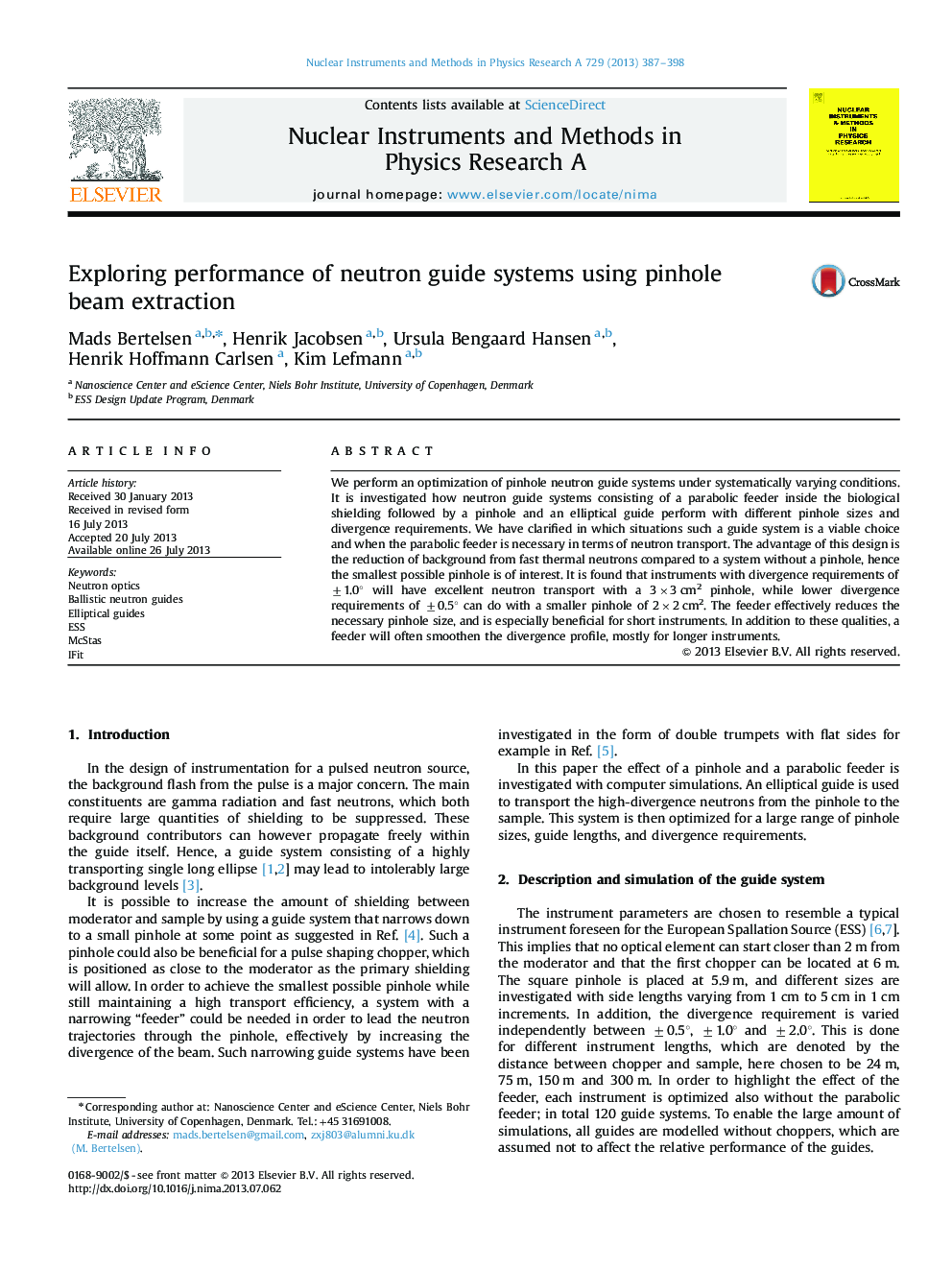| Article ID | Journal | Published Year | Pages | File Type |
|---|---|---|---|---|
| 8178975 | Nuclear Instruments and Methods in Physics Research Section A: Accelerators, Spectrometers, Detectors and Associated Equipment | 2013 | 12 Pages |
Abstract
We perform an optimization of pinhole neutron guide systems under systematically varying conditions. It is investigated how neutron guide systems consisting of a parabolic feeder inside the biological shielding followed by a pinhole and an elliptical guide perform with different pinhole sizes and divergence requirements. We have clarified in which situations such a guide system is a viable choice and when the parabolic feeder is necessary in terms of neutron transport. The advantage of this design is the reduction of background from fast thermal neutrons compared to a system without a pinhole, hence the smallest possible pinhole is of interest. It is found that instruments with divergence requirements of ±1.0° will have excellent neutron transport with a 3Ã3 cm2 pinhole, while lower divergence requirements of ±0.5° can do with a smaller pinhole of 2Ã2 cm2. The feeder effectively reduces the necessary pinhole size, and is especially beneficial for short instruments. In addition to these qualities, a feeder will often smoothen the divergence profile, mostly for longer instruments.
Keywords
Related Topics
Physical Sciences and Engineering
Physics and Astronomy
Instrumentation
Authors
Mads Bertelsen, Henrik Jacobsen, Ursula Bengaard Hansen, Henrik Hoffmann Carlsen, Kim Lefmann,
